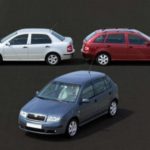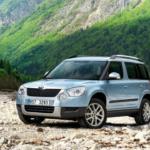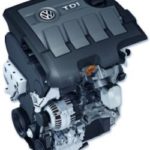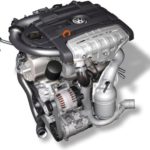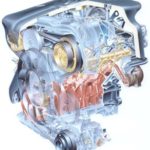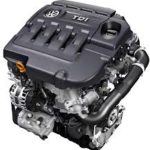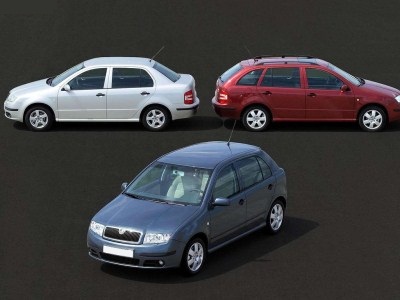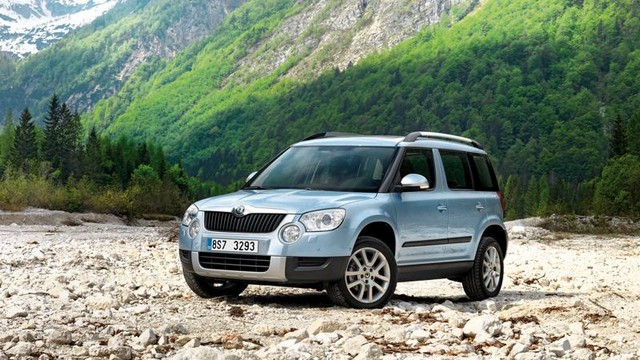Škoda 1000 MB 1964 - 1969 - History of cars
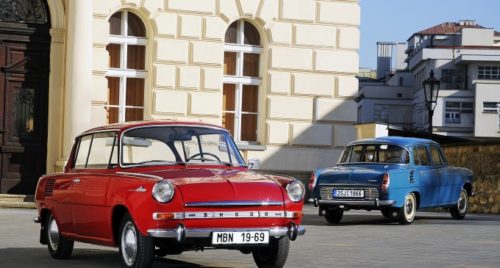
Too bad 1000 MB
Exactly half a century ago, at the Geneva Motor Show Škoda presented its new model "1000 MB" which she wanted to move from the classic construction of previous cars and make an export hit.
Did you know that Skoda is one of the oldest car factories in the world? It was founded back in 1894 and this year celebrates its 120th birthday. Before the Second World War, it was celebrated with its cars of modern conception and bold design.
After the war, in the mid-fifties, the management realized that the classic concept of its models with front engine and rear-wheel drive would not be competitive enough in the coming times, so it ordered a team of engineers to design a completely new vehicle of modern concept and design, cheap enough to domestic customers, and yet attractive and competitive enough to export.
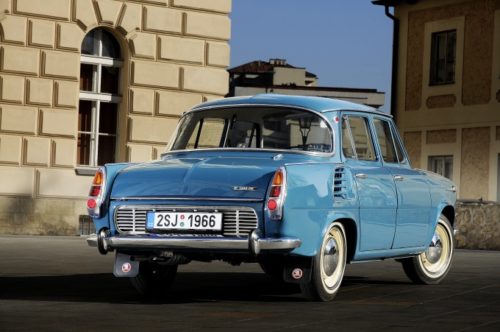
The first series had a rounded rear window and large gills for air
Work began in 1954, and engineers working in a very isolated environment at the time could only rely on their own knowledge and literally have to invent a "pot hole" to come up with some solutions that we now all take for granted done. This is why it should come as no surprise that the development of the new model has taken as long as ten years.
In addition to the desire for a modern car, one of the imperatives was to reduce production costs. As they were in completely uncharted territory, the fundamental Czechs prepared as many as three types of prototypes, all with different mechanics and motorization settings, to test which direction to go.
Through extensive traffic testing, they concluded which was the easiest to produce and the best for drivers in the second half of the twentieth century.
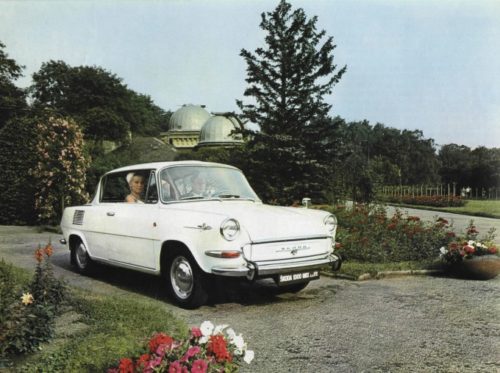
The coupe variant had a boosted engine over the sedan
They wandered for a long time, both with design and with mechanics. In the second half of the fifties, the chief engineer, Mr. Velebni, began to crystallize the picture of what the layout of the mechanics would look like, but in no way did they go about designing the body properly.
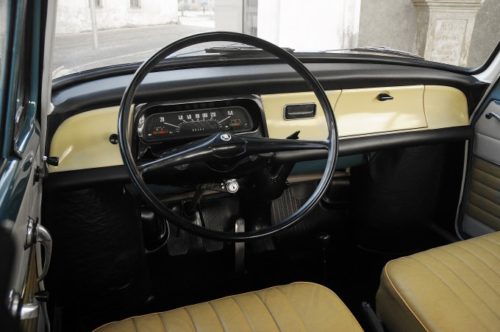
The cabin is spacious for the time the car came on
Skoda's historians testify to an unprecedented effort to perfect every detail. To that end, several prototypes have crossed 1,6 million miles in the worst possible weather.
At 30 degrees below zero, snow and ice, the cars were exhibited in Siberia. The other extreme, temperatures of 45 degrees, sand and bad roads were found in Azerbaijan. The durability of the components at constant high speeds was tested on highways in East Germany.
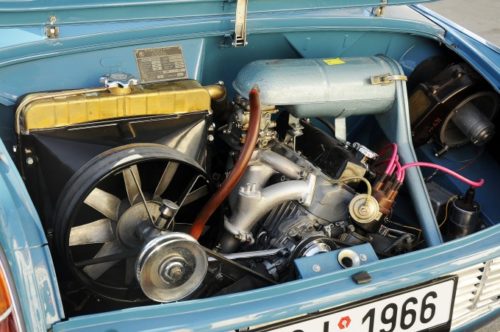
The engine block and gearbox were cast in aluminum which was very modern
The mechanics passed all tests without problems, the beginning of batch production was approaching, but the design had not yet been defined. This is where the Czech designer Jan Zacek "jumped in" who judged and gave the car a classic three-dimensional design with modern details that were popular during that period.
One year before the premiere, the car was completed and the construction of a brand new factory hall and access roads in Mladá Boleslav was expected to be completed. How well the Czechs were convinced of the success of their new model speaks to history.
During a visit by Soviet President Leonid Brezhnev to Czechoslovakia in 1963, the host, President Antonin Novotni, took a guest to a new factory, where they had the opportunity to personally transport the new "damage".
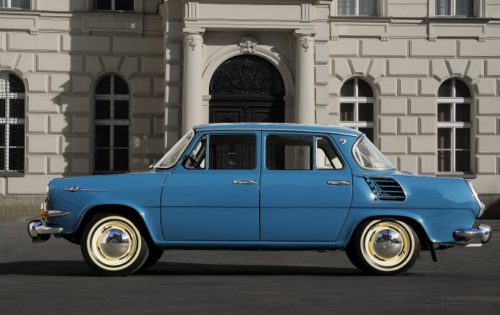
It was well received outside the Warsaw Pact
The long-awaited moment of the "1000 MB" premiere has come. Foreign journalists have accepted the damage very well. They praised its design and concept, and most of our colleagues' tests ended with the statement that the car offers the most value for money from all competitors.
However, it turned out that "damage of 1000 mb" was not so cheap and favorable for the inhabitants of Czechoslovakia. When the then average salary in Czechoslovakia and the price of "damage 1000 MB" are compared with the current average salary in the Czech Republic, it would turn out that under the same conditions the current "damage factory" should cost 44 thousand euros!
In the West, on the other hand, this car was one of the cheapest. It cost 44KK, and for example, "simka 1300" cost 53KK. Therefore, it is not surprising that "1000 MB" was a hit and a big export asset of Czechoslovakia.
A large proportion of the 443.156 produced ended up in export, with data saying that 1.270 vehicles were assembled in New Zealand. Production of "1000 MB damage" was completed after only 5 years in 1969.
Despite the obvious problems with the introduction of new technology, "damage 1000 MB ”was a huge success and paved the way for a new era of the factory, a period that lasted until 1989, when the" front-wheel drive "favorite was introduced.
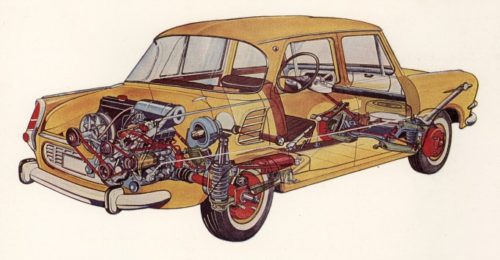
Modern construction
Although they accepted a design that was more conservative than the forward / forward platform, Czechoslovakian engineers did their best to improve the mechanics to ensure good driving performance.
For starters, the front wheels are mounted on double triangular shoulders, while the rear ones are longitudinal shoulders.
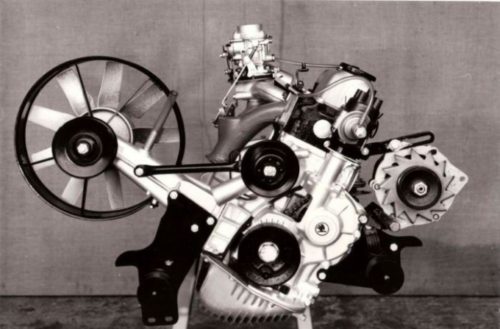
To maximize the weight of the powertrain, they have opted for a revolutionary solution - cast aluminum. In this way, the engine block with wet liners and the gearbox housing are made. The head was of gray cast iron due to sealing problems.
A thousand big worries?
Drivers in our country used to pet "a thousand little worries" as they jokingly interpreted the model's name. During the exploitation of serial cars, the name turned out not to be so unjustified.
Under extreme conditions of full load driving (although some claim that the conditions did not have to be extreme) the engine easily overheated and the head gasket could become overheated.
It is obvious that the factory also saw this problem because they made a special partition in the engine compartment to accommodate water canisters. The problem with the engine of a thousand cubic meters was obviously bigger than we can assume, because in 1968 a brand new engine of the same volume was introduced.
A block of larger, newly constructed, 1100-cubic-liter gasoline was used to share the same piston stroke. Witnesses claimed that there was a problem with the rigidity of the lower part of the aluminum block and the bearing, as well as the connecting rods.
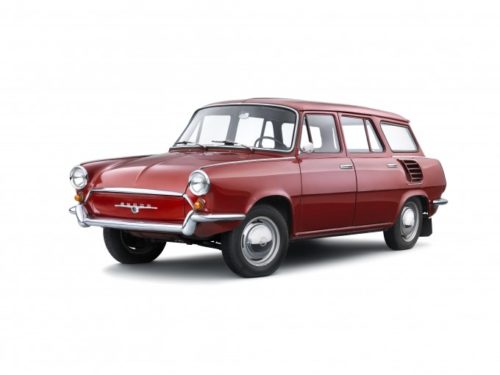
The caravan prototype came closest to batch production
A decade of research
The factory management has given its research team the task of making the most modern, affordable car possible. The basic idea of engineers is to want a car with a self-supporting body and independent suspension on all four wheels.
This decision was relatively easy and straightforward, but it was a big problem to decide on the type of mechanical platform. There were three directions they could go: with the classic front-wheel-drive, rear-wheel-drive, front-wheel drive and front-wheel drive.
The latter, the most advanced variant, advocated, among other things, the Ministry of the Interior, after being assured of all its benefits through the success of the "P50" Trabant of a similar concept, which went into mass production in 1957.
The prototype with a water-cooled 988 engine was designed by engineer Rudolf Vikukal and has been called the "damage 976". The prototype easily proved its superiority in driving characteristics, comfort and cabin space, but the isolation of Czechoslovakia influenced the fate of this prototype.
Namely, the extremely trivial part today, the homokinetic joint on the front axles, stopped the further development of this car. None of the factories in the country at that time could adopt the serial production of this part, and procurement from abroad, and even the purchase of patents and technology were out of the question.
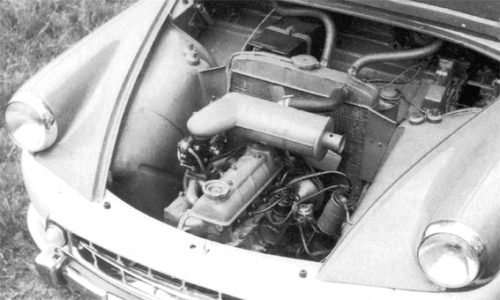
Front-wheel drive prototype
This pushed the development team in the direction of the car with the engine in the tail. At that time, this concept was widespread and well accepted in the world. Two prototypes called "977" were made.
One had a 988 cubic meter water-cooled gasoline tilted 30 degrees to the left, while the other had a 1016cc air-cooled boxer. This second, air-cooled model proved to be too bulky and uneconomical.
In the end, the "977 / II" prototype was chosen for the mechanical platform, and this decision was greatly influenced by the fact that such a car was supported by the company Motokov, the then exporter of "damage" abroad.
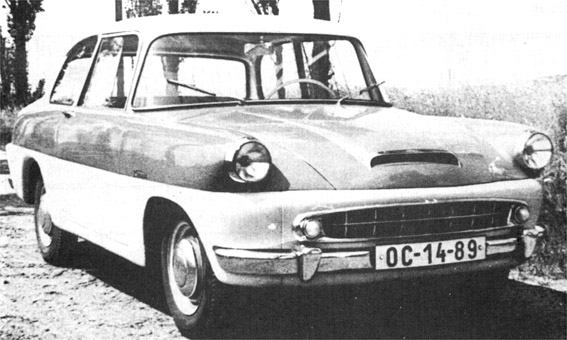
The 976 prototype
Let's also mention the third base prototype, the "978" model, which had a classic setup with a water-cooled 988cc engine and rear-wheel drive.
After calculations showed that this car would be 15 percent more expensive to produce than the "977", it was definitely abandoned to refine it.
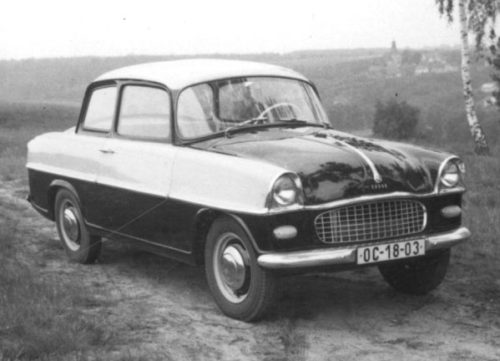
The 978 prototype
In the early XNUMXs, when mechanics and design were defined until the end, engineers made several interesting variants. Perhaps the most interesting wagon version was on the verge of being introduced to batch production.
However, it was stopped because some insurmountable problems arose. To make the fifth door and usable luggage space, the designers laid the existing gasoline engine on the side, below the boot floor.
This construction made it difficult to lubricate and cool the engine, so the only specimen produced now adorns the setting of the Skoda Museum. Another nice prototype is a convertible with a soft roof. Unfortunately, the torsional rigidity of the body was a big problem, so the cabrio remained just a nice idea and desire.
Too bad in Serbia
The "1000 MB" model was extremely popular in the former Yugoslavia, so every contingent that came to the market was plundered. The author of this text did not have to search too much for the witnesses of the time, since "1000 MB" was a means of transport in his family. Here is the first-hand testimony (quite by accident) of the mother of the author of this article.
- I bought a "Skoda 1000 MB" as soon as it appeared in 1964. My car was from another contingent that arrived in the country. I was young, finished my studies on time, got a job, got a loan and bought a car.
The choice was extremely small at the time. I was planning a "fic", but when I saw the "damage" in the newspaper and realized that the price difference was not that big, especially since I was paying it in installments, there was no dilemma.
Raising a loan at the time was no problem, but getting a car was! I remember spending a whole night outside the store with a few other friends who were also buying a car. I was fortunate enough to enter the quota, many remained outside the door.
We called her "a thousand little worries", but I really didn't have any problems with her. Admittedly my needs and driving style were not too demanding.
Yet, in ten years, it has not rusty anywhere, or left me on the road. I sold it with a hundred thousand miles. What I have left in my memory are frequent service trips because the engine oil change interval was three thousand miles.
Ah, that there were those famous lower plant lubricants, I think they had to lubricate every 7500 kilometers.
I had a good deal of damage and was satisfied with the quality, so I replaced it with another one, this time with "110l".
Text: Ivan Katunac and Ljiljana Djordjevic-Katunac
Retrieved from: www.magazinauto.com
Recommendation of similar texts:

Hi there, I am Mladen and I am an auto enthusiast. I started this blog years ago to help like minded people share information about latest cars, car servicing ideas, used car info, exotic cars, and auto technology. You will find helpful articles and videos on a wide variety of cars - Audi, Mercedes, Toyota, Porsche, Volvo, BMW and much more. Ping us if you have anything cool to share on latest cars or on how to make older cars more efficient, or just want to say hi!

